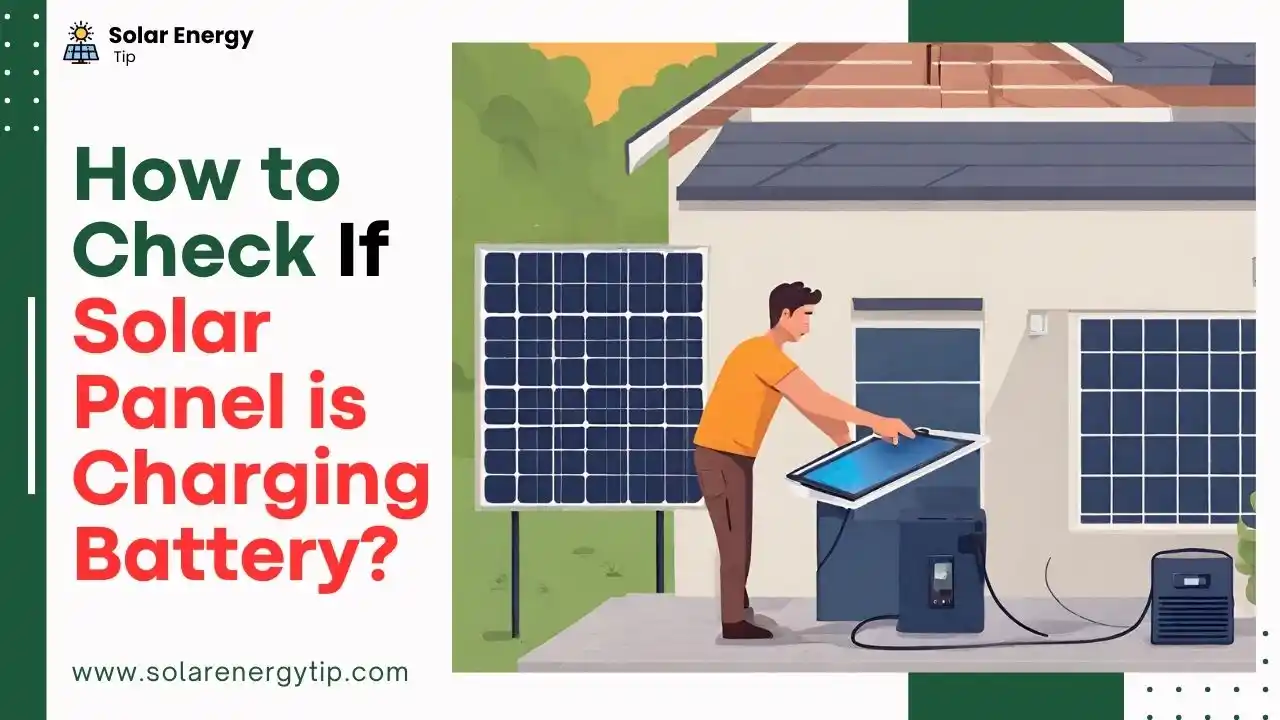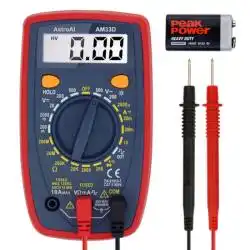If you have a solar system in your place, then the maintenance of this system is a crucial task in the long run.
In maintenance, If you think my solar battery has some problems, then I want to share with you some steps for how to check if solar panel is charging battery properly or not.
A good battery is best for your system to store extra electricity.
So, for your battery’s optimal performance, this checking process is crucial from time to time.
I have been checking my solar battery from time to time for my solar system to see how well the solar panel is charging or not.
From my experience, I will tell you here how to know if solar panel is charging battery.
Let’s dive into this.
- Why Would you Check if a Solar Panel isn’t Charging your Battery?
- How to Check If Solar Panel is Charging Battery? A Step-By-Step Guide
- Safety Precaution For Checking the Solar Panels Charging the Battery
- How To Know If Solar Battery is Fully Charged?
- Faqs
- Conclusion – How to check if the Solar panel is charging the battery?
Why Would you Check if a Solar Panel isn’t Charging your Battery?
First of all, you should know why and for what you are going to do this task checking, which I will tell you below.
- If your battery is troubleshooting
- To track the charging and discharging cycles
- Voltage levels
- Regular maintenance for the overall health of the batteries
How to Check If Solar Panel is Charging Battery? A Step-By-Step Guide
Before going through the step-by-step process, you should know what are the charging indications
You can do the two types of charging indication
- Visual Inspection – By constantly monitoring the solar panel and battery for visual signs of charging, Check for any physical damage or cracks in the solar panels and make sure wires are well connected.
- Monitoring tools – We can check battery performance using tools like charge controllers and voltage meters.
Both of you use the indication to run your process. For Checking Voltage, you can use my favorite multimeter, which is below.
AstroAI Multimeter Tester
Digital Multimeter with DC AC Voltmeter
Measures AC/DC Voltage, DC Current, Resistance, and Diode accurately, automotive circuit troubleshooting, charging systems, etc.
Let’s start the steps to check solar battery charging.
Seven simple steps to know if your solar panel is charging
Step 1: Checking the Voltage of Solar Panel
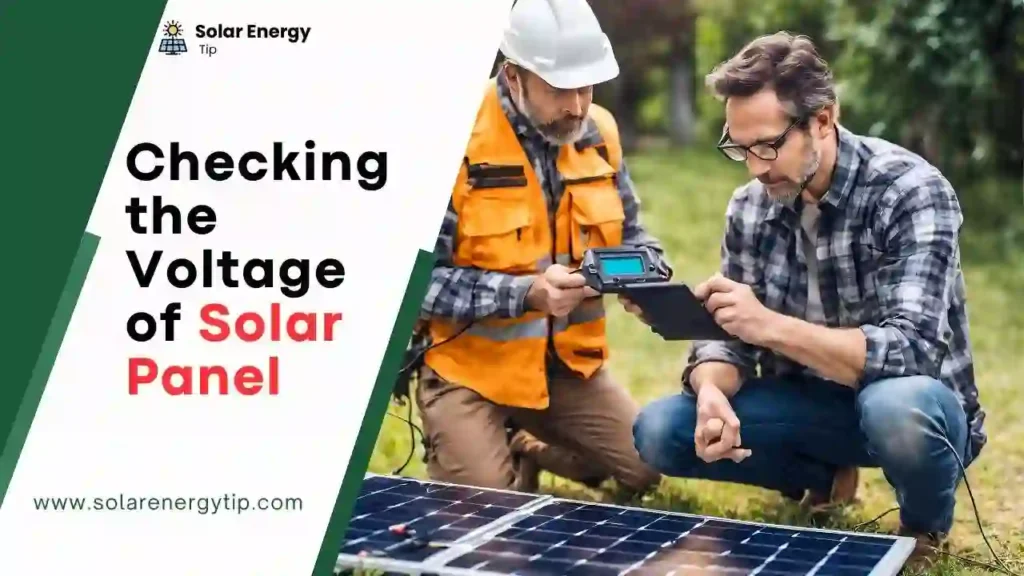
In this task, First, you have to measure the voltage of the solar panel itself.
This process will give an idea of how much electricity panels produce.
Now take your multimeter and follow these steps
- First, set your multimeter to the DC voltage setting.
- Connect the positive probe (red) to the positive terminals (+) and negative probes (black) to the negative terminals (-).
- Then, read the voltage displayed on this multimeter.
- If it is 10 to 17 volts, your solar panels are generating the correct electricity.
- If not, then there is some problem with the solar panel or its connection.
Step 2: Measure the Voltage of Connection Point
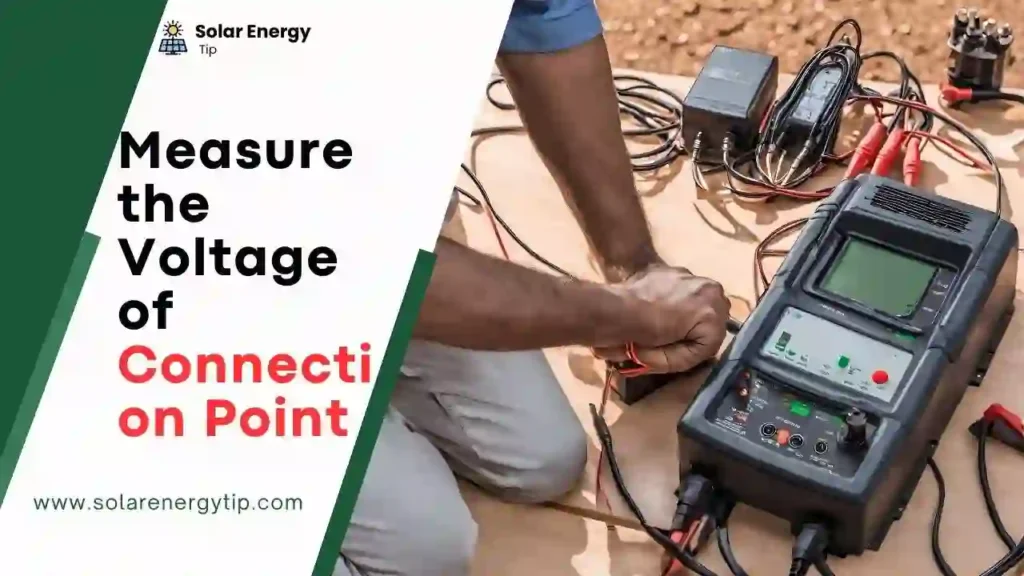
Now check the voltage at the point where you have connected the solar panel to the battery.
For that, you need to disconnect the battery first and then measure the voltage of the wire coming from the solar panel.
Now, the voltage level on the multimeter should be slightly less than the actual voltage level of the solar panel we measured.
But if there is no voltage response, there is a possibility of a wire break in your connection.
Step 3: Inspecting The Charge Controller
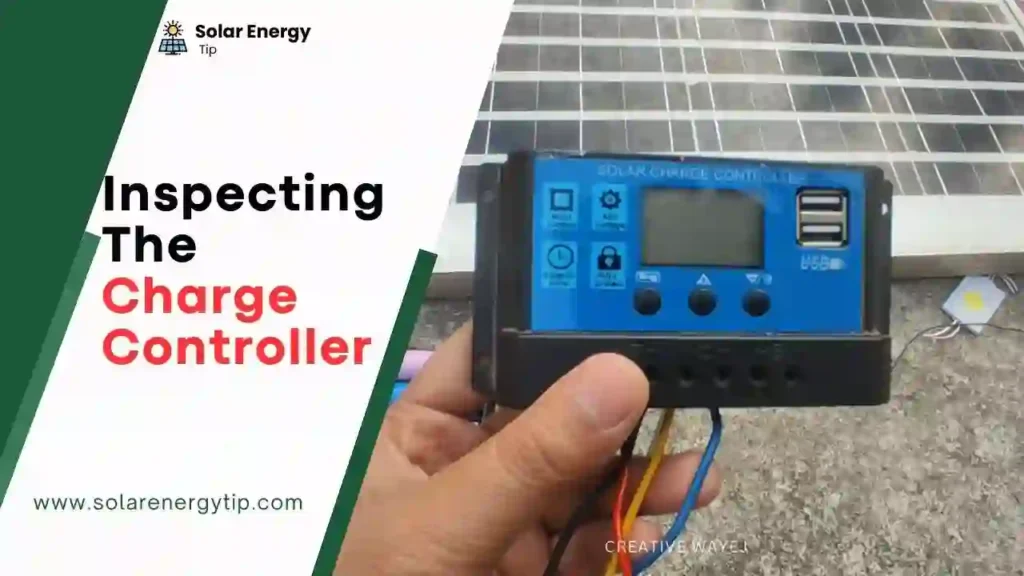
The solar charge controller is a crucial element that regulates the flow of electricity from the solar panel to the battery.
So, take some checking criteria for the charge controller.
- First, check if the solar charge controller is properly connected to the battery and solar panel.
- Then, Verify the controller settings are suitable for your battery type.
- Look at the indicators on the charge controller that may indicate a fault or error.
Step 4: Inspecting The Solar Inverter
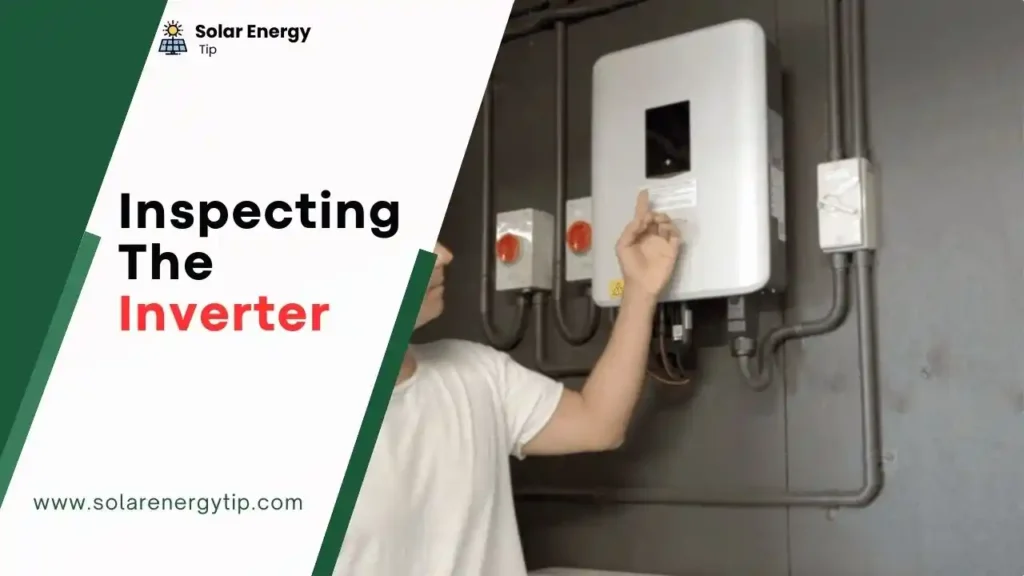
The inverter is used to convert the direct current (DC) produced by the solar panels into the alternative current (AC) for use to store in the battery.
In how to know if your solar panel is charging your battery, you should check your inverter,
- Ensure that the solar inverter is connected properly.
- If the inverter displays an error message, examine the fault indicator.
- If you have troubles, consult the manufacturer’s instructions or an expert.
Step 5: Check the Battery Voltage
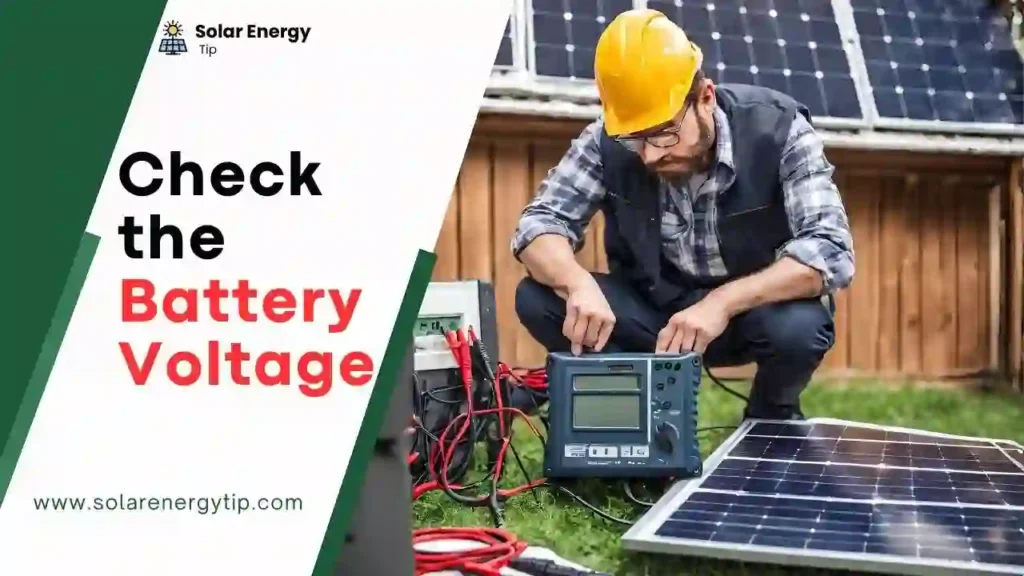
After all these checks, now it’s time for you to check the battery voltage.
Follow the below steps to measure battery voltage.
- First, disconnect the battery from the wires. Note the voltage on the multimeter.
- Then, put again your battery back, and it charges.
- Now, at the end of the day, again, check its voltage.
- If it’s increased from the first measurement (usually 12V or 24V), it means your battery is charging successfully.
Step 6: Monitor Before and After Charging
You should also monitor your battery before and after charging.
It involves checking the battery voltage using a multimeter before exposure to sunlight.
And check the voltage again after a few hours after sunlight.
If there is any increase in the reading during this time, your solar panel is transferring electricity properly and raising the battery voltage.
It shows that your solar panel is charging the battery properly.
Step 7: Observe the Battery Charging Time
This is also a way to check if the solar panel is charging the battery properly.
When you first install a solar system, keep a record of the time it takes to charge the battery fully.
Then, keep recording the full battery charge time every month.
During this process, use sunlight availability and average to guess if the solar panels are lacking in battery charging capacity.
For How to test solar panels with a multimeter, I suggest a video here.
Safety Precaution For Checking the Solar Panels Charging the Battery
In this checking process, you should remember to take safety first.
Here, I tell you some preventive tips.
- You Should wear protective gear, like gloves, safety glasses, etc.
- No one should open the battery during this time because it contains harmful elements.
- Make sure all connections are secure before testing.
- Avoid performing this test in wet and rainy weather where there may be an electrical hazard.
How To Know If Solar Battery is Fully Charged?
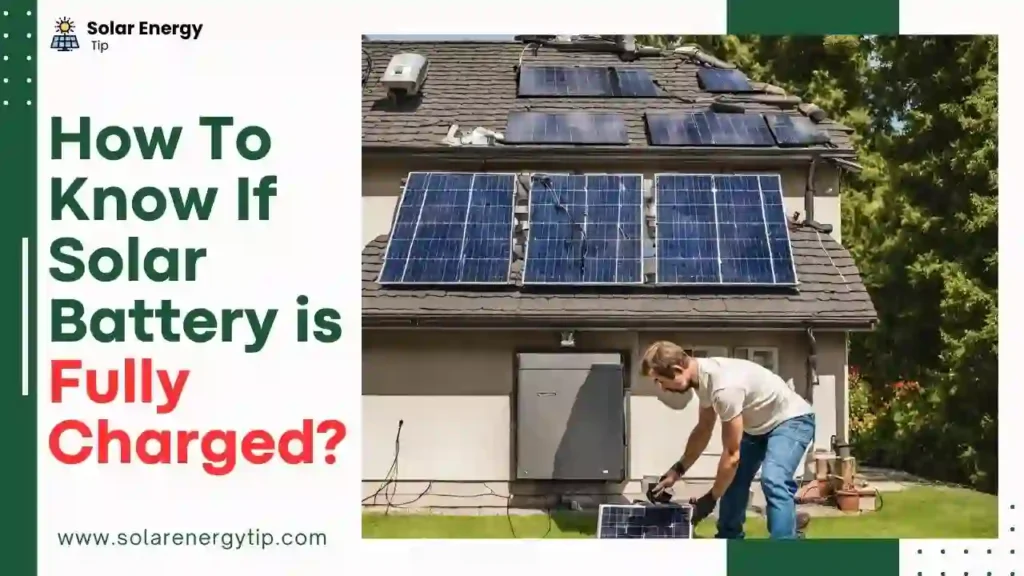
There are two ways to check a solar battery is fully charged.
Check the LED lights on the Solar charge controller.
The charge controller has an LED, which indicates the charging state of the solar battery.
When the battery is 100% fully charged, the green or blue LED will blink.
For LEDs, consult your charge controller manual for the exact color meaning of the lights.
Measure the Voltage of your Battery
You can use a multimeter to measure the voltage of the battery.
When you use a 12V battery at 100% full battery charging condition, the multimeter shows 12.7 volts, and using a 24V battery, the multimeter shows 25.4 volts.
Faqs
How Long Does a Solar Panel Take to Charge a Battery?
It depends totally on the size of the panels, the capacity of the battery, and the weather conditions.
But in general, in full direct sunlight, 100W solar panels take 5-8 hours for a fully charged 100Ah, 12V Battery.
Can I Check Charging Without a Multimeter?
Yes, you can check solar battery charging without a multimeter.
You can use a charge controller’s indication to measure the battery charging. Look at the indication lights for charging status.
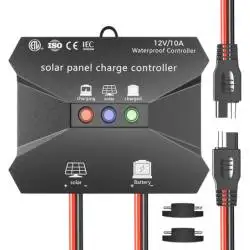
What Causes Fluctuations in Voltage?
Some things that can cause the multimeter voltage function are below.
- Loose or corroded wire connection
- Using high-power appliances
- Changes in power demand
- Natural causes like lightning or strong wind
- Faulty or mismatched components
What Role Does Temperature Play in Charging Efficiency?
High temperature reduces solar panels and battery charging efficiency and life. While low temperatures impair chemical reactions during charging.
The temperature range should be 50-80°F for maximum solar panel charging efficiency.
How Often Should I Check My Solar Panel’s Charging Status?
The charging status of solar panel systems should be checked first after proper operation.
Then, make it a habit to check in weekly or monthly to detect any issues; if there is a major weather event, check immediately afterward.
What Percentage is a Solar Battery Charging?
You can know the charging percentage of your solar battery by volt meter, such as 12.3V, which indicates 60% battery charge, and 20V maximum battery voltage, which indicates full charge.
Why is Voltage Measurement Important for Assessing Charging Status?
Because it indicates stats for the charge of the battery, increasing voltage indicates adding energy to the battery through charging.
Measuring the voltage determines the charging effectiveness.
Conclusion – How to check if the Solar panel is charging the battery?
In conclusion, regularly monitoring battery charging status is important to optimal solar power system performance.
By following my above steps guide, you can confidently assess if your solar system is effectively charging your solar battery.
In addition, if you want to know more about solar charging checking and issues, then comment to me, and I will reply to you as soon as possible.

